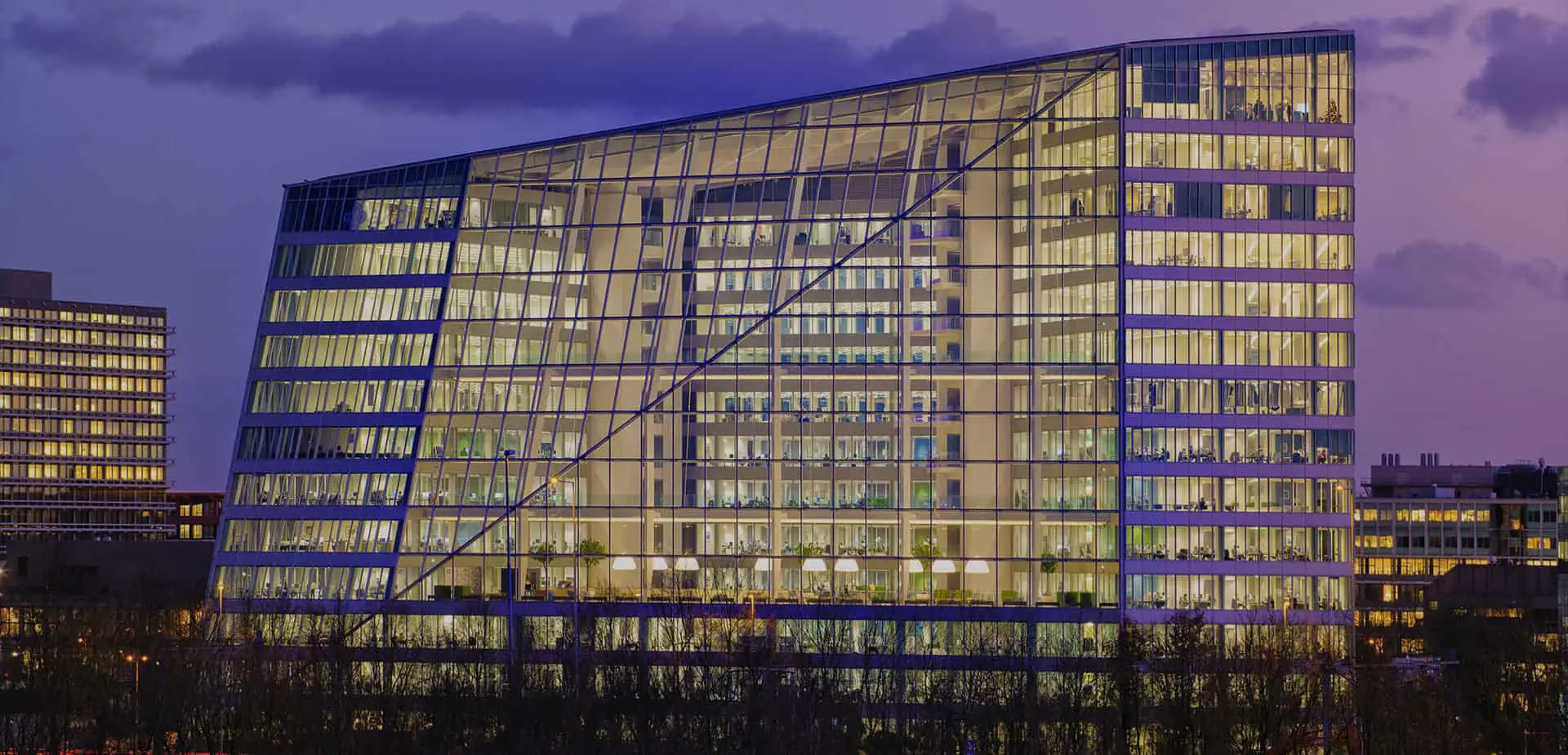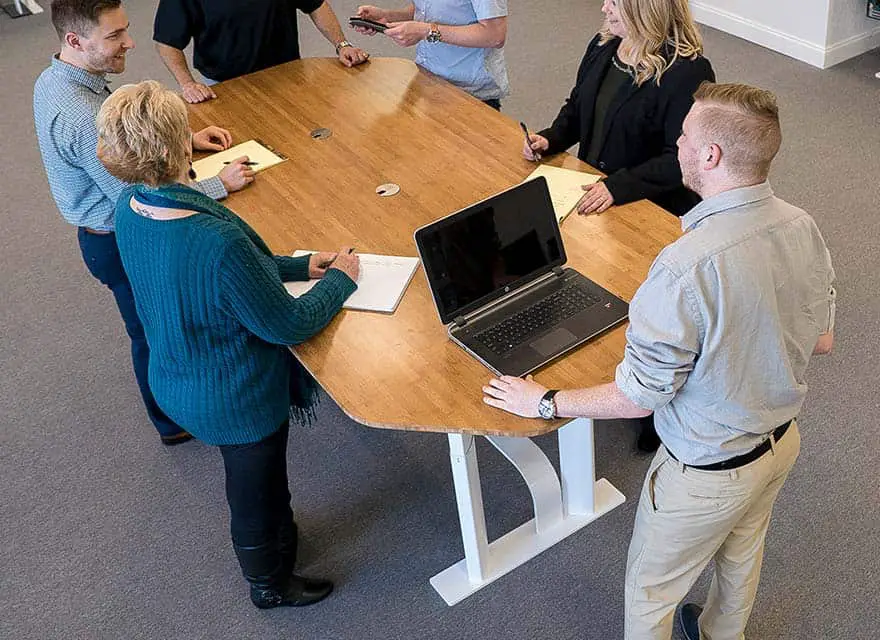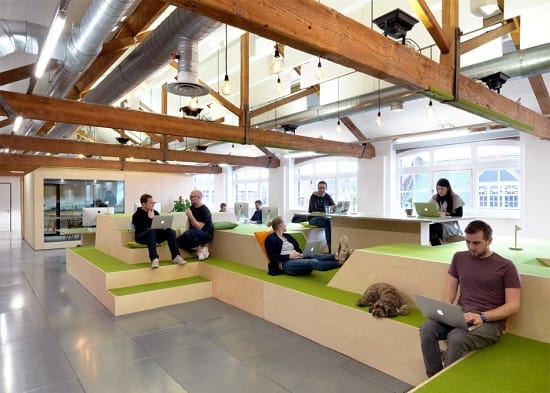It started with an employee or two asking to work from home maybe once a month. Then the word caught on, and, before you knew it, you had a handful of staff requesting to take several days a week to work from home. You’ve decided to let them, at least on a trial basis. What kind of guidelines do you need for your remote staff?
The following guidelines will keep you manage working from home employees:
- – Create or update your confidentiality agreement
- – Change your workplace policy to reflect new security rules
- – Consider where the employee will work, as it’s a matter of health and safety
- – Ensure each remote employee has the necessary equipment to work
- – Plan for some means of remote tech support
- – Track productivity with measurable metrics
- – Set work hours and expect fast communication during those hours
In this article, we will expand on the guidelines outlined above, explaining each in detail. It may seem scary letting your employees go, but you’re far from alone in doing so. There are 3.7 million people in the United States working from home as of 2017, says Fundera . Your company can contribute to that statistic and still maintain productivity.
. Your company can contribute to that statistic and still maintain productivity.
Eight Guidelines for Work-from-Home Productivity and Success
1. Work on Your Confidentiality Agreement
When just a couple of your employees worked from home, you didn’t have to touch your company’s confidentiality agreement. Now that more and more have taken the plunge? It’s time to go back and review this document.
You of course have reasonable expectations about what your in-office employees can and can’t share with outsiders. How does that extend to your employees that work remotely? If one staff member spends their workday at a café, which documents can they open in front of others? Which phone calls can they take in public and which should be done behind closed doors?
These questions need answers, and you’re the one who has to do it. You must make clear that there are repercussions to breaking company confidentiality. Whether that includes a severe punishment or termination of employment is your choice, but you shouldn’t let it go without penalty. Then you risk employees regularly leaking company information, whether knowingly or unknowingly.
2. Include Security Provisions in Your New Workplace Policy
As your company grew, you opted to get on a more secure network, keeping your servers privatized. Again, you wanted to prevent information leaks involving your company and even your clients and/or customers.
That’s all fine and good if your employees work in the office. Then they too can use the secure network. What about when these employees start working from home? You can’t say for sure what kind of security they’ll have, even though they’re still working with private information.
If that makes you nervous, then rightfully so. It should. Hackers can crack into huge brands and companies without breaking a sweat, so what’s to stop your private company information from getting out there and disseminated?
Once you’re done amending the confidentiality agreement, you need to rewrite or add on to parts of your company policy. Create rules for employees and how they deal with private information. For instance, maybe you ban remote employees from using public Wi-Fi or you take some other proactive measure. Whatever works, make sure it’s in writing. This way, it’s enforceable. If you don’t change the company policy, then employees can do what they want. This will inevitably lead to an information leak or some other kind of trouble.
.jpg)
3. Get Involved in Selecting Your Staff’s Workspaces
One of the perks of working remotely is staying home, right? These employees can enjoy the creature comforts of their favorite place day in and day out. While that’s surely the reality for some employees who work from home, it’s not the case for them all. Some of your staff have a spouse who doesn’t work or children who need tending to all day. It gets hard for them to focus on their work and stay productive at home.
For that reason, these employees opt to work somewhere else. Perhaps it’s the aforementioned café or even a coworking space.
It doesn’t matter where your remote employees eventually settle; you must have a hand in it. Again, you want to reflect this change in your company policy. Make sure the place the staff member plans to work has your explicit approval before they begin their work-from-home setup. (We have written a related article – How To Be Happy Working From Home )
)
You want to see this place in person. Perhaps you even opt to test for things like carbon monoxide protection, security from burglary, how well the fire alarms work, and if the place has asbestos or other health dangers lingering around.
You have to do this for the health and safety of your employees. If one of your remote staff members were to work from home or somewhere else for a few years and then get sick or injured, they could turn around and sue you for it. If you don’t have anything in your company policy about remote workplaces, then you’re out of luck.
Not only that, but this employee could ensure your company gets in hot water with the Occupational Safety and Health Administration or OSHA. It’s not worth the risk. Make sure your employees have a healthy place in which to work now, not later.
4. Provide the Equipment Necessary for the Job
When you hire a new employee, they get their own tech and equipment for working. That’s standard. This equipment often includes a desk phone and a computer. Some companies offer their employees laptops or tablets as well as smartphones for easy communication.
Whatever equipment your company hands out, when a staff member leaves the office, they’re leaving that tech behind, too. However, said employee still needs a computer, a phone, and other equipment to work from home.
It’s up to your company to determine which tech and equipment, if any, you’ll give these remote employees. Most people own laptops and smartphones, so you might let the employee use those. Whatever decision you make—you guessed it—put it in your company policy. Now you know the matter can’t come back to bite you later.
You might ask your employees to run speed tests on their computers before they start working remotely. After all, if they have an old clunker, then minor tech issues will keep them from getting a lot done each day. Companies sometimes also request that employees get an antivirus software and pay for higher-speed Internet so they can work as efficiently as possible.

5. Offer Remote Tech Support
Speaking of work computers, when something goes wrong with one, you have a tech guy or girl you can call on. Perhaps your IT person works right in the office or they commute over, but they always speedily resolve the issue so your office can keep on trucking along.
What about when a remote staff member’s computer goes screwy? Your IT person can’t exactly go door-to-door to fix everyone’s tech. No one’s expecting them to. For your remote employees, you can just as easily use remote tech support through your company. Maybe you contract your IT person for the job or hire a second IT pro for remote support.
support.
Again, make sure all this goes into your company policy. Include the extent of problems your remote tech support can cover, the hours in which they work, and how your remote employees can reach out to the IT person to get help.
6. Review the Productivity of Your Staff
It’s relatively easy to determine the productivity levels of your average employee. Sure, you can’t have eyes on everyone at all times, but you can check Internet browser history and other data to see who’s actually working and who’s spending all day on their phone.
You lose all that the moment your remote employees start working from home. You like to think these staff members won’t spend all day on the couch instead of in front of their computers, but how can you know for certain?
You must have a means of tracking and reviewing productivity. Perhaps you go by how many clients the employee speaks with per day. If it’s a customer service-related job, then you could count the number of cases the employee closes. Similarly, you could track how many sales they make. Even the amount of time the employee spends doing any one task can indicate productivity.
You know what we’re about to say. When you do figure out how to measure productivity for your company, put it in your policy. Clearly explain these expectations as well as what will happen if the employee doesn’t meet them.

7. Select Working Hours for Your Staff
Your office opens at nine o’ clock in the morning and closes at five, give or take. Should your remote employees have the same schedule or will you give them more leniency? Maybe some of your employees work better later at night or earlier in the morning.
It’s up to you if you’ll accommodate special cases or if everyone works nine-to-five, no questions asked. Don’t let some people work one schedule and others another, though. You could create dissention in the office, and you don’t want that. Once you make your choice, update your company policy to match.
8. Maintain Regular Communication
You must also have communication requirements for your remote employees. It’s not like those staff who work in the office. With them, you can call or email, sure, but if they don’t answer? You could always find them at their desk.
You can’t do that with your remote staff. Visiting them at their home or office is a major inconvenience for you, not to mention it’s highly inappropriate. You’ll have to set some basic communication rules to ensure your remote employees don’t go dark when you need them most. Yes, it should go in your company policy.
For instance, if you do opt for a nine-to-five schedule for all employees, remote or otherwise, then you should expect your remote staff to respond during those hours. You have many ways to reach out to them, too, some more impersonal than others. For instance, there’s texting or instant messaging as well as email. You can talk on the phone, video chat, or even invite the employee into the office monthly for a meeting.
While you might feel like you have to overmanage remote employees at first because you can’t see them, watch how high you set your expectations. For instance, when you send an email, you shouldn’t demand the remote employee respond in two seconds if you don’t expect your office staff to do the same. That’s workplace discrimination in action.
Also, don’t pester your remote staff after working hours. You might think, “well, they’re home, so technically, they’re at the office. They can do this quick little thing.” If you wouldn’t reach out to your office staff, then don’t bother your remote employees, either. Again, it’s discriminatory and will ensure your remote work plan fails.
Related Questions
Should employees be allowed to work from home?
If you remember the stat from the beginning of this article, 3.7 million US employees work from home. That data was from two years ago, so surely it’s even more now in 2019. That means many companies would say yes, employees should be allowed to work from home. Some jobs practically demand it, others not so much. What’s clear is more and more companies do permit it.
To figure out if yours should, you might want to start with an internal assessment. Which positions in your office would translate best to a work-from-home environment? Which ones absolutely must stay at the office?
Once you figure that out, review who has asked to work from home. You might bring them in for a sort of informal interview. Discuss why they want to work from home, what kind of tech and equipment they have, and what kind of workplace setup they could use. Then, after the meeting, you might review productivity and other metrics for said employee. If they’re a hard worker, then perhaps you let them work remotely. If they already have a tendency to slack off, then maybe you deny the request.
Before you let your employees take the dive fully, you might create a type of temporary work-from-home arrangement. For instance, perhaps you give a few employees three months to try working remotely. During that time, they follow all the above guidelines to optimize the success of the experience.
After those three months pass, sit down with each employee to talk about their experience. Did they enjoy it? Maybe they found working from home more challenging than expected. Look at their productivity metrics, too. Did they work better at home or did their productivity hit a slump?
If you’re happy with employee performance and your staff members want to keep working from home, then you may allow them to. You can also curtail remote work if it doesn’t suit your company.
Is it illegal for hourly employees to work from home?
What if you’re paid hourly and you want to begin working remotely? How would that work? According to HR resource SHRM , you must take into account the legalities of such a working arrangement.
, you must take into account the legalities of such a working arrangement.
For example, your hourly employees will have to get very good at recording their timesheets. They must also have a clear understanding of which tasks they do are work-related and which aren’t. Then, in most cases, your company remains within legal parameters.
Make sure you have an overtime policy as well. Once your employee exceeds 40 hours of work a week, anything they do technically counts as overtime. Thus, you’d have to pay them overtime. However, when a work-from-home employee does this and you’re not aware of it until they come asking for payment, this can create ill will between you both.
This overtime, which is unauthorized, must get addressed right away. While you can’t make your employees turn off their computer at five o’ clock on the dot, by reminding them that unauthorized overtime is not permissible, that should hopefully curtail the behavior.
Do keep in mind that, even if your employee has worked overtime when you said not to, and even if they don’t put the hours on their timesheet, you could still have to pay overtime. That’s true if you or someone else at the office have a hunch the employee has done extra work.


















.jpg)




